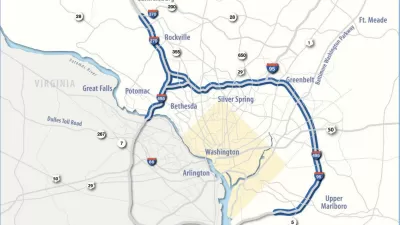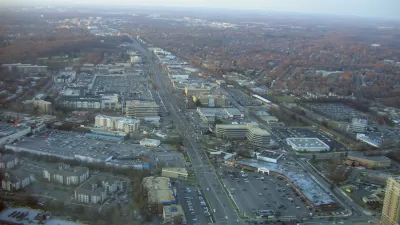A plan to widen interstates 495 and 270 failed a critical step on the way to approval, in a decision likely to lead to a lawsuit when the Maryland Department of Transportation settles on a final plan.

"The planning agency that serves Montgomery and Prince George’s counties on Wednesday formally rejected the state’s plan for widening the Capital Beltway (I-495) and Interstate 270," reports Bruce DePuyt.
The Maryland-National Capital Park and Planning Commission voted unanimously to reject the plan. The Draft Environmental Impact Statement for the project has been available for public comment since the summer, but the original idea for the plan dates back to 2017 and it’s the brainchild of Maryland Governor Larry Hogan.
"Because the commission is a 'cooperating agency' in the formal process for obtaining needed land and environmental permits, the vote is a potential complicating factor for the state’s push to add four 'express toll lanes' to the two highways," according to DePuyt.
The members of the Maryland-National Capital Park and Planning Commission explained their opposition to the plan in line with the criticisms of the plan since 2017: namely, that the plan fails to account for the land use, transportation, and environmental consequences of the proposal. The source article includes a more detail list of objections.
"The Maryland Department of Transportation is expected to select a final design for the project next May," according to DePuyt. "The commission’s objections will likely form the basis of a legal challenge to the state’s decision, lawyers familiar with the National Environmental Policy Act said."
FULL STORY: Planning Agency Rejects Hogan Highway Widening Plan

Alabama: Trump Terminates Settlements for Black Communities Harmed By Raw Sewage
Trump deemed the landmark civil rights agreement “illegal DEI and environmental justice policy.”

Study: Maui’s Plan to Convert Vacation Rentals to Long-Term Housing Could Cause Nearly $1 Billion Economic Loss
The plan would reduce visitor accommodation by 25% resulting in 1,900 jobs lost.

Why Should We Subsidize Public Transportation?
Many public transit agencies face financial stress due to rising costs, declining fare revenue, and declining subsidies. Transit advocates must provide a strong business case for increasing public transit funding.

Paris Bike Boom Leads to Steep Drop in Air Pollution
The French city’s air quality has improved dramatically in the past 20 years, coinciding with a growth in cycling.

Why Housing Costs More to Build in California Than in Texas
Hard costs like labor and materials combined with ‘soft’ costs such as permitting make building in the San Francisco Bay Area almost three times as costly as in Texas cities.

San Diego County Sees a Rise in Urban Coyotes
San Diego County experiences a rise in urban coyotes, as sightings become prevalent throughout its urban neighbourhoods and surrounding areas.
Urban Design for Planners 1: Software Tools
This six-course series explores essential urban design concepts using open source software and equips planners with the tools they need to participate fully in the urban design process.
Planning for Universal Design
Learn the tools for implementing Universal Design in planning regulations.
Smith Gee Studio
Alamo Area Metropolitan Planning Organization
City of Santa Clarita
Institute for Housing and Urban Development Studies (IHS)
City of Grandview
Harvard GSD Executive Education
Toledo-Lucas County Plan Commissions
Salt Lake City
NYU Wagner Graduate School of Public Service




























